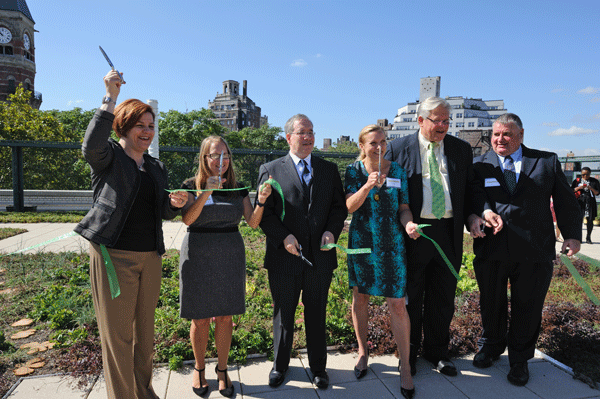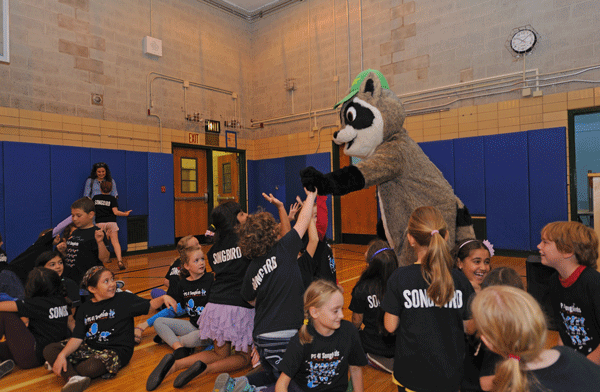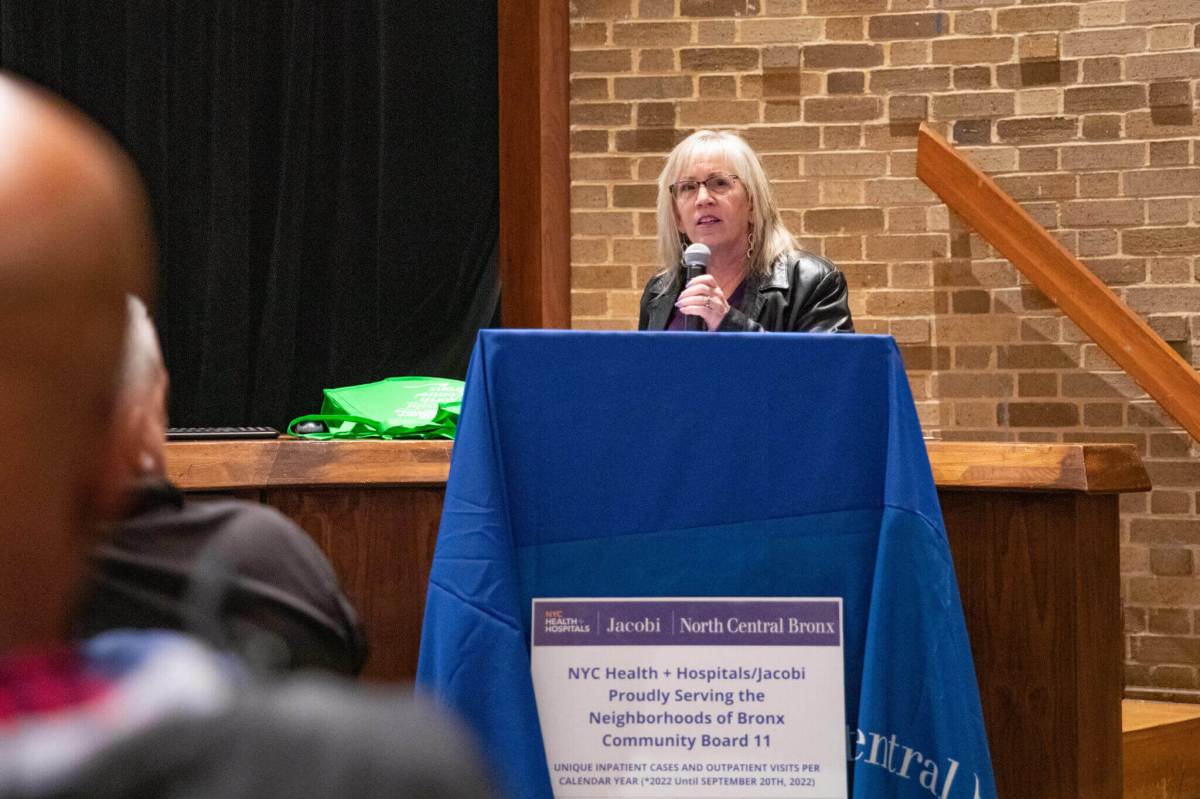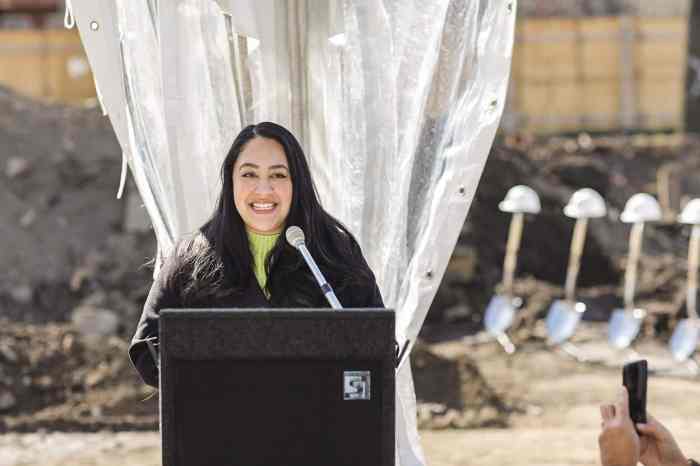
At the ribbon cutting for P.S. 41’s green roof on Sept. 21, the scissors were wielded by, from left, City Council Speaker Christine Quinn, Principal Kelly Shannon, Borough President Scott Stringer, teacher and green roof point person Vicki Sando, state Senator Tom Duane and Daniel O’Gorman, project manager for the School Construction Authority.
BY TERESE LOEB KREUZER | Last Friday, some P.S. 41 students sat patiently on the floor of the gym waiting for their turn to open the celebration of the school’s new green roof with the song, “Together We Can Change the World.”
“Will anyone famous be here?” one third-grader asked a nearby adult. The credentials of Borough President Scott Stringer, City Council Speaker Christine Quinn and state Senator Tom Duane had to be explained, but when Ranger Rick appeared, he was immediately recognized and greeted with outstretched hands.
Ranger Rick is the mascot of the National Wildlife Federation, one of the funders of the 15,000-square-foot roof planted with sedum and other vegetation that now tops the Greenwich Village school, on W. 11th St. at Sixth Ave. Stringer and Quinn contributed $650,000 each through their respective offices, and Duane kicked in another $200,000 to make the green roof possible. The rest of the funding came from corporations, local businesses, educational institutions and individuals.
The project cost just under $2 million and took six years to bring to fruition. The roof is being used by science classes and will be integrated into other parts of the curriculum.
At the ribbon cutting, Quinn spoke about her sister, a geologist, who learned her love of science through classes they took as children. She noted that two women at P.S. 41 spearheaded the green roof project — Principal Kelly Shannon and parent and teacher Vicki Sando. Quinn found that to be “incredibly important as we struggle with math and science not being embraced as much by women as we know it should be.” The Council speaker called the green roof “a feminist project” and said that she hoped it would excite a love of science “and bring us great male and female scientists.”
Duane said the roof would teach more than science.
“This was a lesson in civics — how to fight for something. Things like that don’t happen unless people advocate for them,” he said.
The roof has been planted primarily with varieties of drought-tolerant sedum that can withstand harsh summer heat and winter snow and winds. An herb garden at one end of the roof planted with lavender, rosemary and sage has already attracted bees to pollinate the flowers. Birdhouses attached to a fence surrounding the garden await winged residents.
In addition to its educational value, the green roof has environmental benefits. Buildings covered with a green roof are significantly cooler in summer and warmer in winter. They also absorb rainwater that, during heavy rains, could otherwise contribute to flooding the city’s sewers, in turn, emptying sewage into New York’s waterways.
“I think this is very significant for the city of New York,” said Stringer at the ribbon-cutting ceremony. “Children are going to learn in a way that our generation never thought possible.” He said that he hoped that P.S. 41’s green roof would be replicated in other boroughs.


















